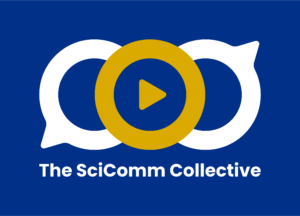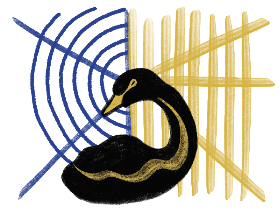
“The following article was written for UWA’s OCEN1001 unit. It is written in the style of Particle articles and is therefore targeting a young audience. When writing the article, I considered that most Particle pieces have punny titles and subheadings. This humour is engaging to the young demographics. I also ensured the readability level was suited to young readers (also a requirement of the assignment). This article begins with a sort of anecdote to interest readers and get them involved in the story. This anecdote is revisited later to complete the story. The article is very short because the unit imposed a length restriction. Without the restriction I may have expanded some explanations.”
– Connie Greeve

Imagine you are a clam…
You live among coral reefs off the West Australian coastline. You are the base of the ocean food chain providing food for smaller fish and seabirds. These fish are then eaten by bigger and bigger fish until suddenly you’re feeding 1 billion people.
Your hard shell is made of calcium carbonate (CaCO3). As you grow you rely on carbonate ions (CO3^-2) in the water around you to form your shell, as do the corals you live among and other shelled creatures.
But alas! The amount of carbonate ions in the ocean is decreasing and your shell is struggling to grow.
Energy from burning coal, gas and oil powers our cities and provides economic security, but the fossil fuels released by these processes are causing disaster everywhere.
The worst offender is carbon dioxide (CO2), which is pumped into our atmosphere at a staggering 40 billion tonnes a year!
The world’s oceans are responsible for absorbing 30% of all carbon dioxide emissions. As our emissions grow so does the amount of CO2 in the ocean. But what is this increase in CO2 doing to life under the sea?

When carbon dioxide is dissolved in water it reacts to produce hydrogen ions and carbonate.
This increase in hydrogen ions increases the acidity of the ocean. Since the Industrial Revolution ocean acidity has increased by 30%.
The abundance of free hydrogen ions also results in a decrease of free carbonate ions as they preferentially react.
Going back to your clamshell… Clams, corals, oysters, sea urchin and plankton need free carbonate ions to calcify their skeletons and shells. The increase in carbon dioxide in the ocean means these organisms find it harder to grow. This has a chain reaction effect that impacts the whole ecosystem.

Ocean acidification also affects some fishes’ ability to detect predators and find suitable habitats.
It’s not all bad though. An increase in CO2 could benefit some seagrass and algae that use it for photosynthesis.
Climate change driven by burning fossil fuels is having a direct impact on life in the ocean. Reducing the amount of CO2 we pump into the atmosphere is our best chance at returning the ocean pH to its usual levels.

Connie is a freelance science communicator with a background in physics and science communication. She is currently completing her Master’s in Science Communication while collaborating with organisations like Pawsey and Einstein-First. When she’s not sharing her passion for science, she enjoys sewing, painting, and hunting for the most colourful finds in thrift stores.


All opinions on this website are representative of individuals and are not representative of The University of Western Australia. The University of Western Australia is not liable for content herein.